Formula School
Martela brought to life a unique vision for the Formula School with exposed utilities, open classrooms, and a central amphitheater for the facility in Moscow, Russia.
The plan of the Martela architects for creating the “Formula” school was based on requests from the pedagogical sphere: what will be the special feature of this school, how many children is it designed for, which educational demands it covers, and how to make sure that the building operates the most effectively for these purposes. The customer, represented by the developer, A101 group of companies, tried to look at how the school should be not from the architect’s viewpoint, but from the position of the teacher and children, and concluded that higher quality teaching spaces at the same time are compact, less energy-consuming and more efficient for capital investments.
Martela architects proposed the concept of a vandal-proof school, where the internal finishing must remain as “rough” materials and will stay in a good condition for a long time. The architects tried to take the market situation into consideration, but not knuckle under it, suggesting a review of the finishing: they did extensive work to create an integral image of the school from which decorative methods were removed, and the primary emphasis was on working with light, shape and such textures as concrete and brick in the classrooms and public spaces. All utilities, electricity, ventilation, where possible, are exposed, while completely safe for the children. And this is also an educational method as children can see how the building is organized and discuss it during some of the classes.
These solutions looks aesthetically attractive, but on the other hand, they significantly cut the building budget and help to avoid annual repair expenses for the entire school. The saving was 30–40 % of the cost of a good, new budget-funded school and saved money were invested into outfitting the classrooms and laboratories.
The core of the facility is the amphitheater that binds together the entire school perimeter. There are essentially no halls here: the classrooms either open out directly into the amphitheater and are separated from it by glass partitions, or they are arranged in spacious recreation areas. Many rooms are planned as functional areas, which makes their arrangement also less conventional. In addition to multipurpose classrooms, the school has a fab lab, cooking and art space, laboratory for chemistry, physics and biology, workshops, media center, and sports hall with rock-climbing wall.
The school turned out compact, 12.6 thousand m2, with a rugged design, found almost nowhere in Russian educational spaces. The lay-out includes senior, middle and elementary school sections for 550 children, as well as a kindergarten for 150.
Design: Martela
Photography: Artem Polykarpov

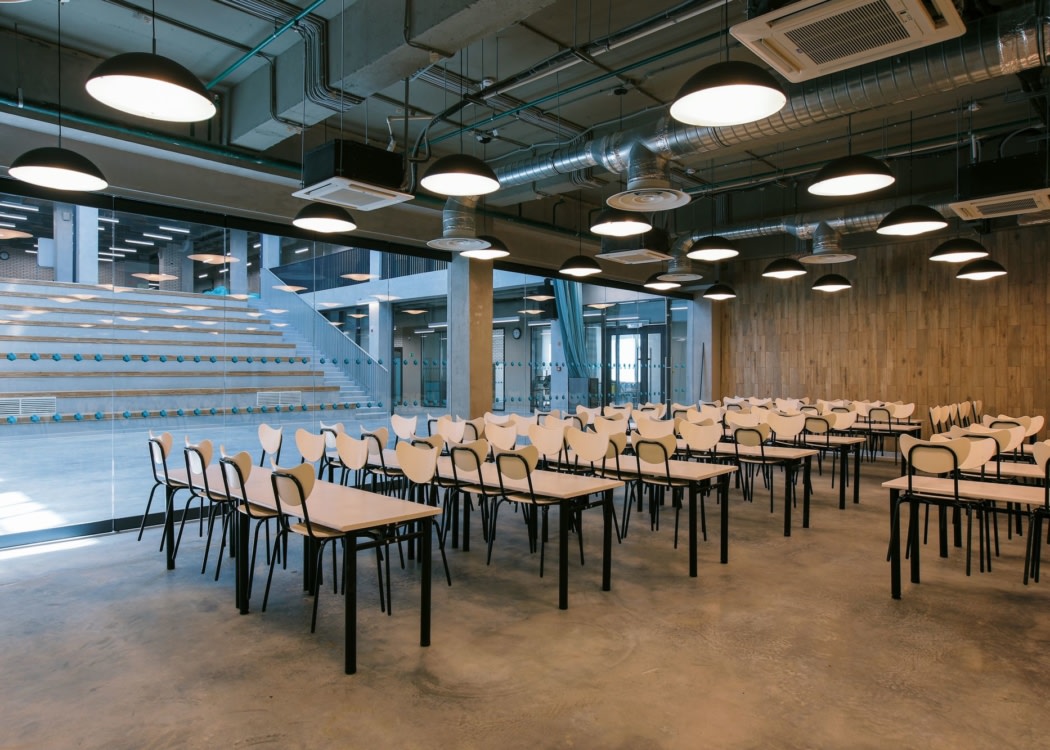
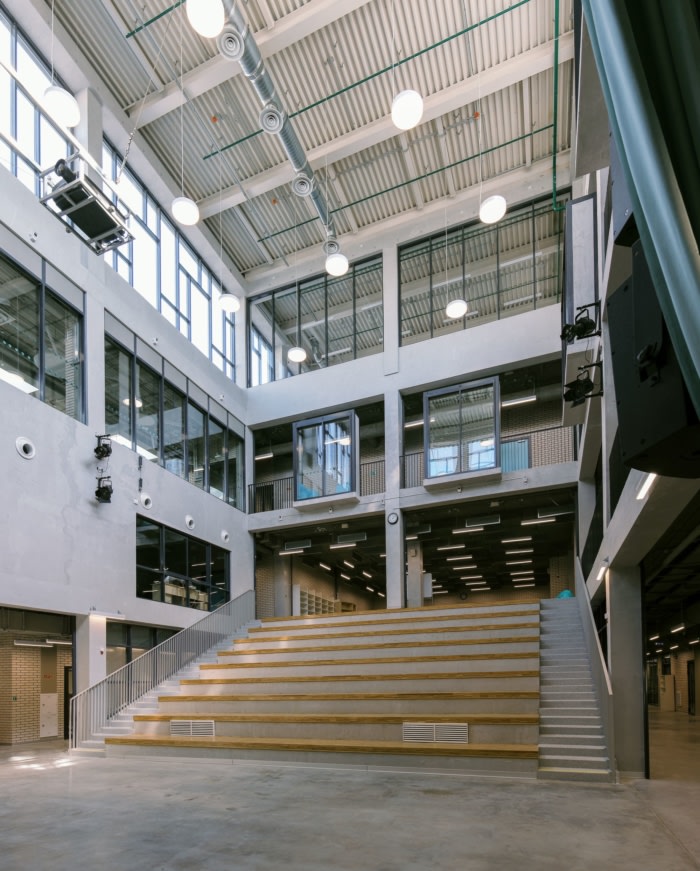
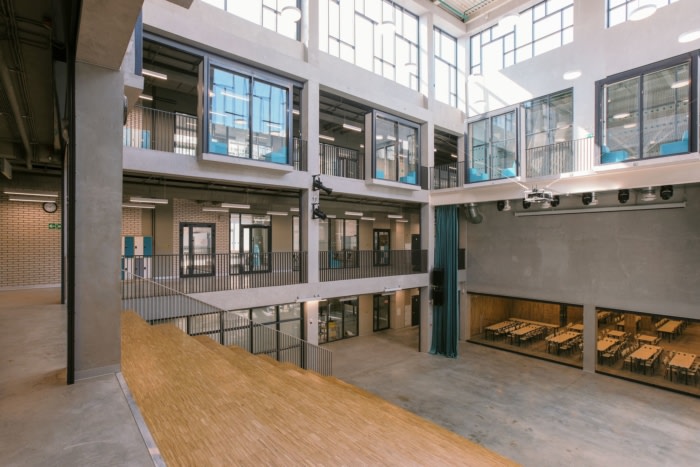
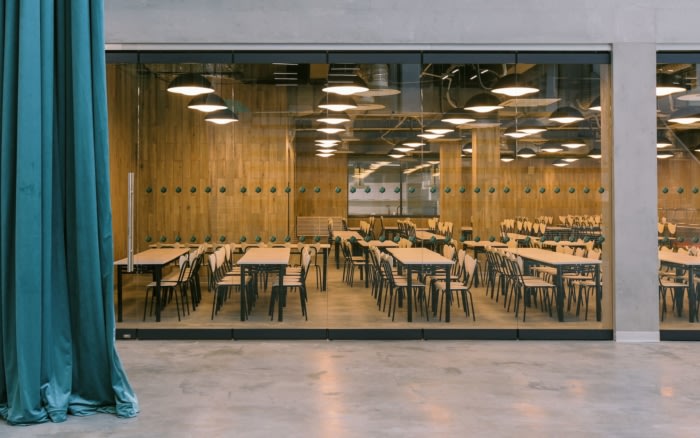

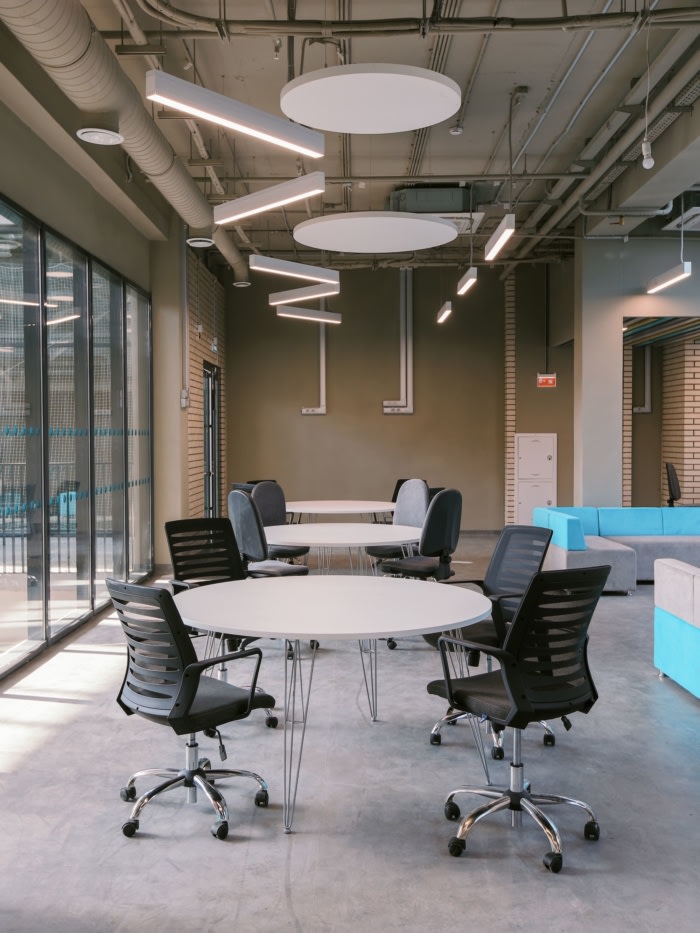
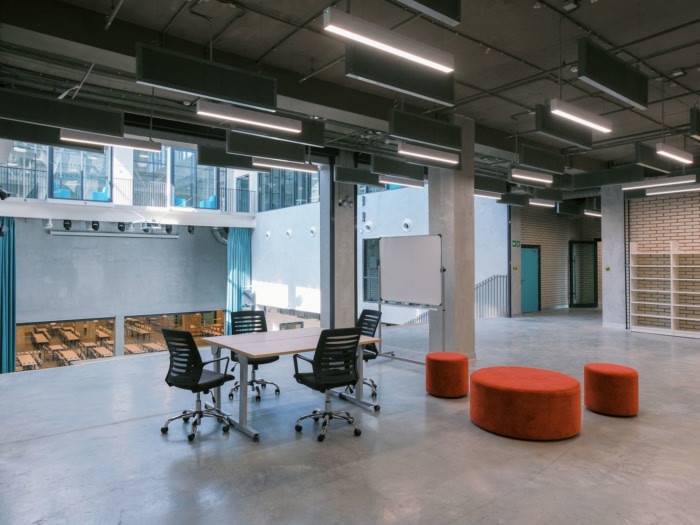
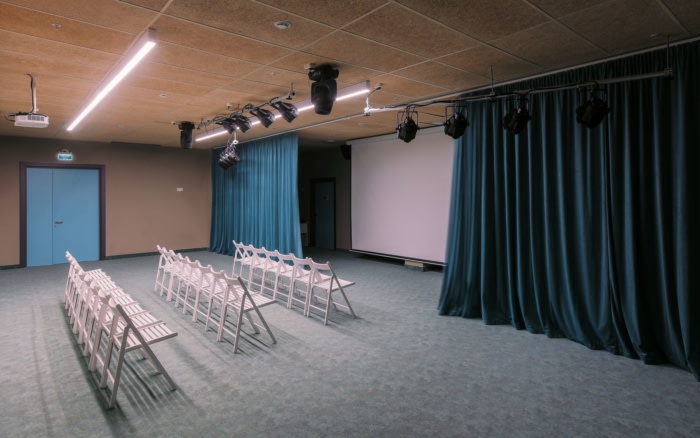
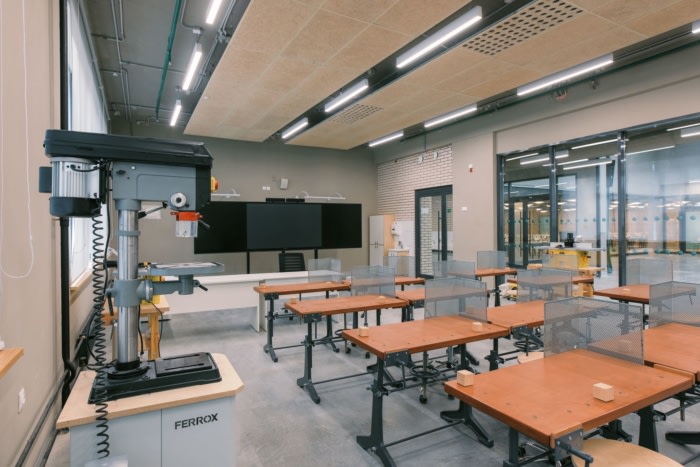
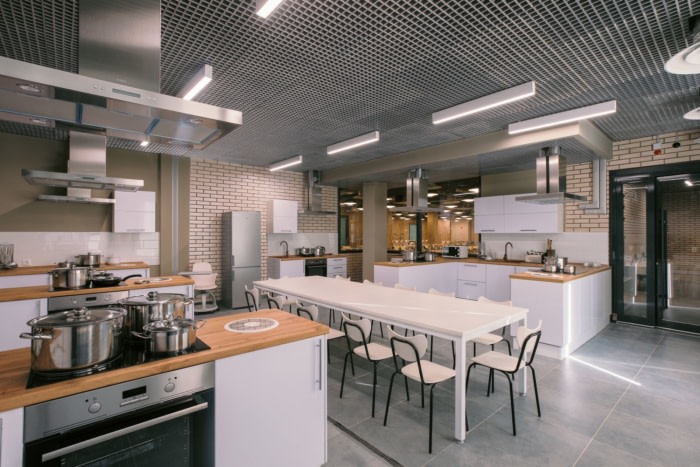
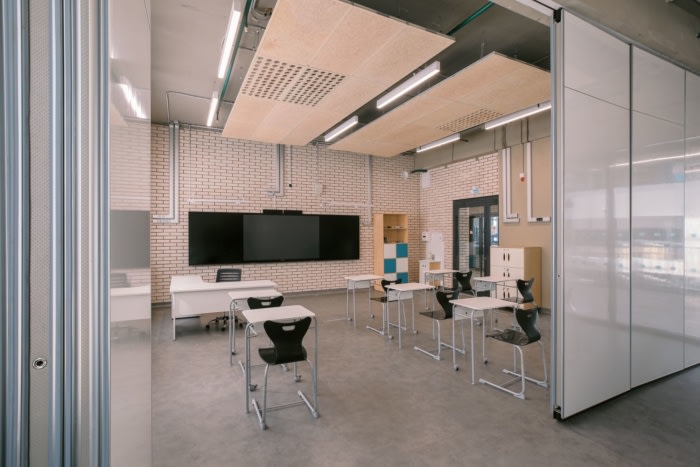
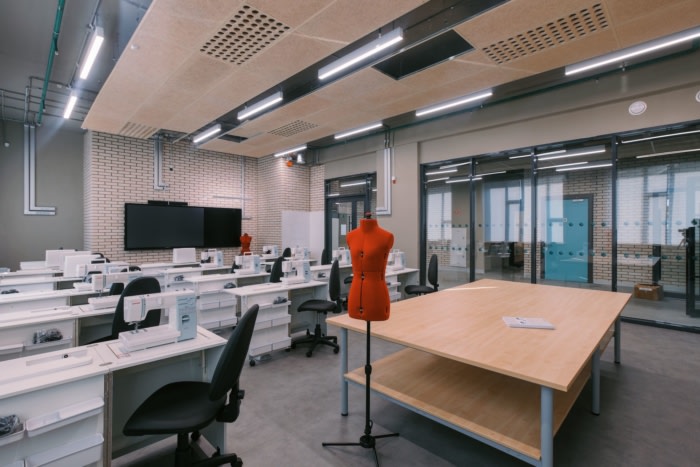



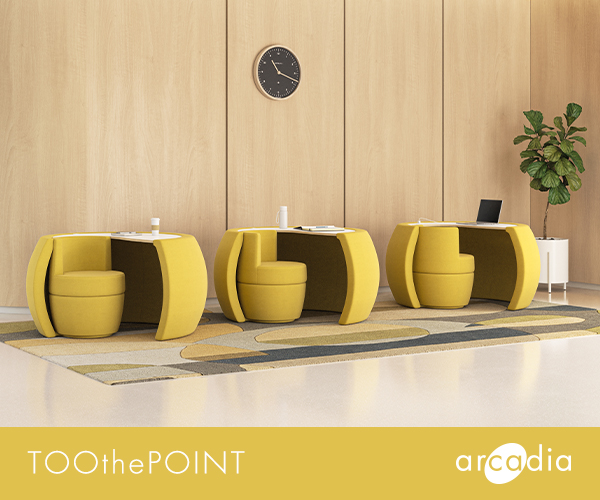
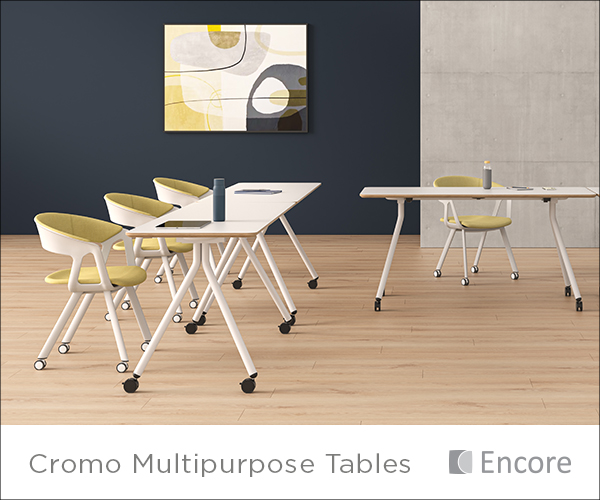




Now editing content for LinkedIn.